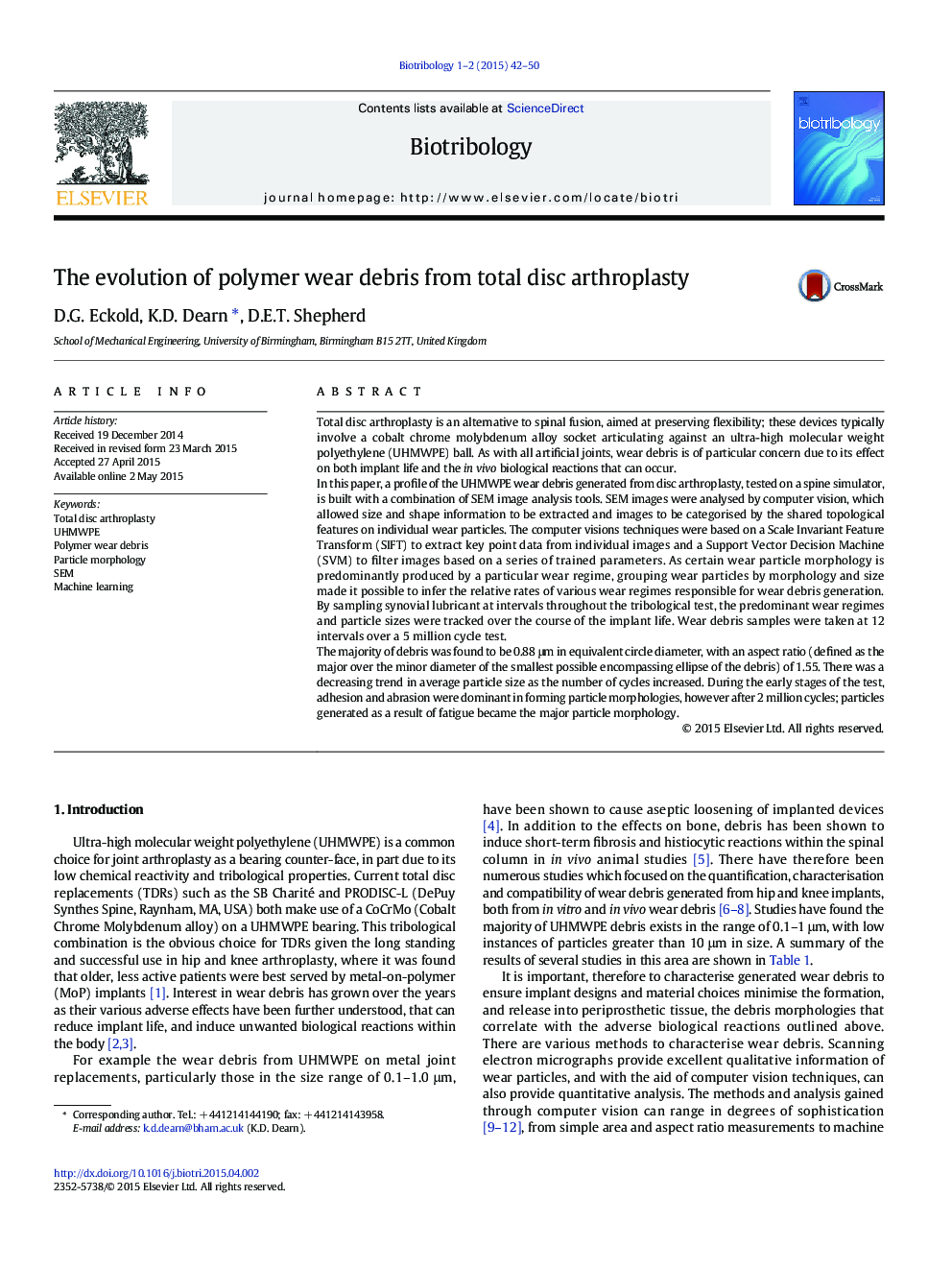| کد مقاله | کد نشریه | سال انتشار | مقاله انگلیسی | نسخه تمام متن |
|---|---|---|---|---|
| 756904 | 1462456 | 2015 | 9 صفحه PDF | دانلود رایگان |
Total disc arthroplasty is an alternative to spinal fusion, aimed at preserving flexibility; these devices typically involve a cobalt chrome molybdenum alloy socket articulating against an ultra-high molecular weight polyethylene (UHMWPE) ball. As with all artificial joints, wear debris is of particular concern due to its effect on both implant life and the in vivo biological reactions that can occur.In this paper, a profile of the UHMWPE wear debris generated from disc arthroplasty, tested on a spine simulator, is built with a combination of SEM image analysis tools. SEM images were analysed by computer vision, which allowed size and shape information to be extracted and images to be categorised by the shared topological features on individual wear particles. The computer visions techniques were based on a Scale Invariant Feature Transform (SIFT) to extract key point data from individual images and a Support Vector Decision Machine (SVM) to filter images based on a series of trained parameters. As certain wear particle morphology is predominantly produced by a particular wear regime, grouping wear particles by morphology and size made it possible to infer the relative rates of various wear regimes responsible for wear debris generation. By sampling synovial lubricant at intervals throughout the tribological test, the predominant wear regimes and particle sizes were tracked over the course of the implant life. Wear debris samples were taken at 12 intervals over a 5 million cycle test.The majority of debris was found to be 0.88 μm in equivalent circle diameter, with an aspect ratio (defined as the major over the minor diameter of the smallest possible encompassing ellipse of the debris) of 1.55. There was a decreasing trend in average particle size as the number of cycles increased. During the early stages of the test, adhesion and abrasion were dominant in forming particle morphologies, however after 2 million cycles; particles generated as a result of fatigue became the major particle morphology.
Journal: Biotribology - Volumes 1–2, March–June 2015, Pages 42–50
